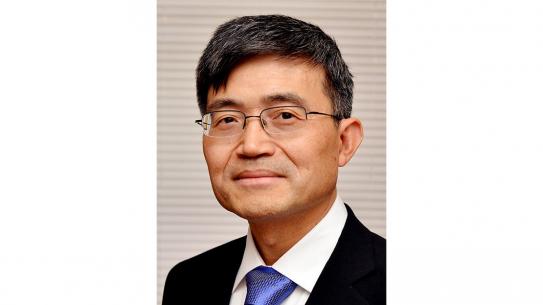Breakthrough study proposes enhanced algorithm for ride-pooling services

In the ever-evolving landscape of urban transportation, ride-pooling services have emerged as a promising solution, offering a shared mobility experience that is both cost-effective and environmentally friendly. However, optimizing these services to achieve high ridership while maintaining efficiency has remained a challenge. A new study by NYU Trandon transportation experts proposes a novel algorithm aimed at revolutionizing the way ride-pooling services operate.
Led by Joseph Chow, Institute Associate Professor of Civil and Urban Engineering and Deputy Director of the USDOT Tier 1 University Transportation Center C2SMARTER, the study delves into the intricacies of dynamic routing in ride-pooling services, with a particular focus on the integration of transfers within the system. Transfers, the process of passengers switching between vehicles during their journey, have long been identified as a potential strategy to enhance service availability and fleet efficiency. Yet, the implementation of transfers poses a highly complex routing problem, one that has largely been overlooked in existing literature.
The research team's solution comes in the form of a state-of-the-art dynamic routing algorithm, designed to incorporate synchronized intramodal transfers seamlessly into the ride-pooling experience. Unlike traditional approaches that focus solely on immediate decisions, the proposed algorithm adopts a forward-looking perspective, taking into account the long-term implications of routing choices.
Central to the study is the development of a simulation platform, allowing researchers to implement and test their proposed algorithm in real-world scenarios. Drawing on data from both the Sioux Falls network and the MOIA ride-pooling service in Hamburg, Germany, the team evaluated the performance of their algorithm across various operational settings.
The results of the study are promising, suggesting that the incorporation of transfers into ride-pooling services using the proposed algorithm can lead to significant improvements in fleet utilization and service quality compared to transfers without it. By accounting for the additional opportunity costs of transfer commitments, the proposed algorithm demonstrates a competitive edge over traditional myopic approaches, reducing operating costs per passenger and minimizing the number of rejected ride requests.
While the findings represent a significant advancement in the field of urban transportation, the researchers acknowledge that further validation and refinement are necessary before widespread implementation. Nonetheless, the study marks a pivotal moment in the ongoing quest to optimize ride-pooling services for the cities of tomorrow.
In summary, the contributions of the research can be categorized into three main areas:
1. Development of an innovative online policy and algorithm for operating ride-pooling services with en-route transfers.
2. Identification and integration of a previously overlooked dimension in transfer decisions, leading to a more comprehensive cost function approximation model.
3. Conducting a rigorous simulation-based experiment, utilizing real-world data to compare various operational strategies and validate the effectiveness of the proposed algorithm.
As cities continue to grapple with the challenges of urban mobility, studies like this offer a beacon of hope, paving the way for more efficient, sustainable, and accessible transportation systems.
This research was supported by MOIA.
Namdarpour, F., Liu, B., Kuehnel, N., Zwick, F., & Chow, J. Y. J. (2024). On non-myopic internal transfers in large-scale ride-pooling systems. Transportation Research Part C: Emerging Technologies, 162, 104597. https://doi.org/10.1016/j.trc.2024.104597





